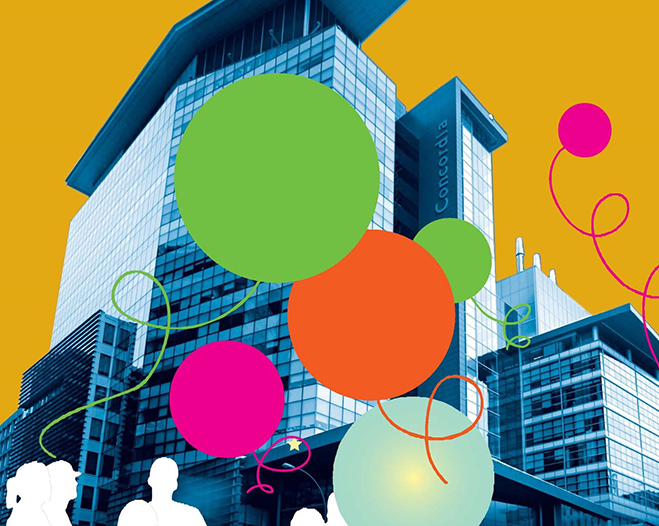Concordia researcher develops a method for generating realistic and reliable construction budgets

Labour disputes, bad weather, delayed city approvals — there are any number of reasons why a construction project gets delayed. And without proper planning, those delays can be extremely costly.
Mohammadjavad Arabpour Roghabadi is a doctoral candidate in the Department of Building, Civil and Environmental Engineering. His research focuses on the correlations between cost items — parts of a project that have associated expenses — in order to help project managers develop more accurate contingency budgets and avoid expensive overruns.
We’re increasing the chance of successful delivery of construction projects
How does this specific image relate to your research at Concordia?

Mohammadjavad Arabpour Roghabadi: This image shows the importance of considering correlations between cost items in estimating a contingency budget for construction projects.
This is a case study of a four-story office building in Montreal with an original cost of $1.4 million. A contingency budget ensures a 70-per cent chance of not experiencing project cost overrun.
Graph (a) shows the estimated contingency without considering correlation between cost items, while graph (b) shows the estimated contingency considering correlations. Since the actual expenditure contingency budget shown in graph (c) is the closest to the estimated contingency in graph (b), we can conclude that the estimated contingency budget is more accurate when considering correlations among cost items.
What is the hoped-for result of your project?
MAR: My work on contingency estimating leads to realistic and reliable cost estimates of construction projects, which alleviate problems of cost overruns that are so prevalent in current industry practice.
The accuracy of contingency estimating heavily relies on the calculation of correlations between cost items. However, this requires a great deal of historical records of cost data that are not often available. In the absence of the historical records, contractors estimate correlations between cost items qualitatively based on their gut feeling and experience.
The objective of my research is to develop a method enabling contractors to estimate contingency, either based on their historical records of cost data — if any — or the experience and judgment of the contractors. As such, the method provides considerable flexibility in estimating project cost contingency to accommodate situations where historical records of cost data may not be available.
What impact could you see it having on people’s lives?
MAR: Estimating the required contingency increases the chance of successful delivery of construction projects and reduces the negative impact of risks, including social, such as protests; environmental, such as fossil fuels; safety, such as traffic; and political, such as economic growth.
What are some of the major challenges you face in your research?
MAR: There is a lack of adequate collaboration between academia and industry. It has always been challenging to implement the academic findings into the real field of the construction business.
What first inspired you to study this subject?
MAR: I was first drawn to the topic through the early work of my supervisor, Osama Moselhi, on the subject matter and how risk assessment and contingency estimating for construction projects can impact economic growth and public welfare. My inspiration was my pursuit of finding and modelling causes behind problems of cost overrun in the delivery of constructed facilities.
What advice would you give interested science, technology, engineering and mathematics (STEM) students to get involved in this line of research?
MAR: If you want to succeed, you need to work hard. The construction industry is a good place for those who are ready to get their hands dirty.
What do you like best about being at Concordia?
MAR: Concordia has a very diverse community. I am amazed to see how people from different backgrounds and ethnicities can actively work together without any sense of discrimination or prejudice.
It is a safe home for those students who want to pursue their dreams and be of benefit to society with their talents. Concordia has a world-class research cluster in construction engineering and management and related laboratories and centres.
I am very thankful to be here and to work with my supervisor Osama Moselhi, who always guides and motivates me to work hard and keep pursuing the path of excellence.
Are there any partners, agencies or other funding/support attached to your research?
MAR: I would like to acknowledge my supervisor for the financial support that he provided me through the Natural Sciences and Engineering Research Council of Canada and Mitacs.
I want to thank the Gina Cody School of Engineering and Computer Science for the International Tuition Award of Excellence and the conference and exposition award.
I also extend my gratitude to the Mitacs agency, which provided me with financial support alongside my industrial partner.
Find out more about Concordia’s Gina Cody School of Engineering and Computer Science.


